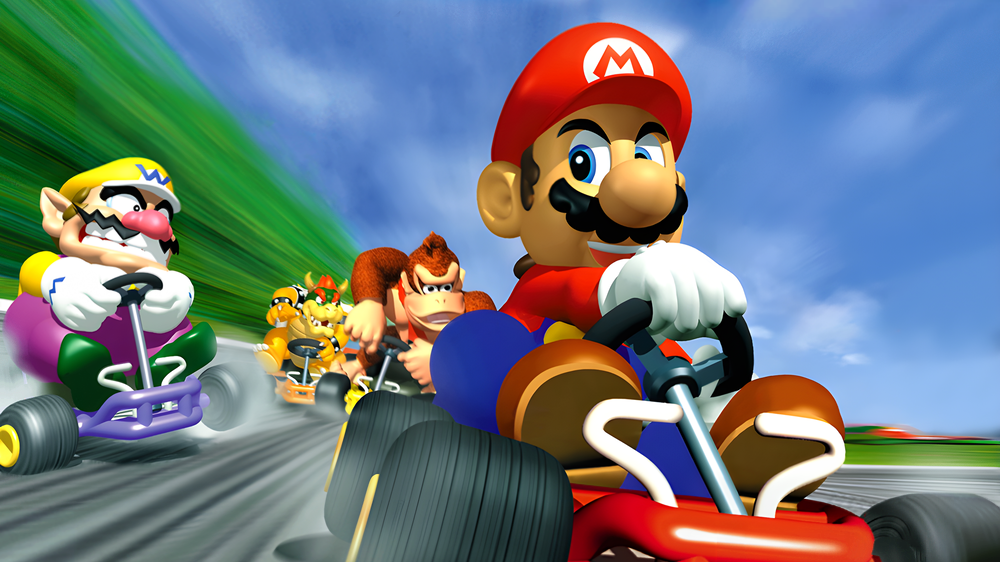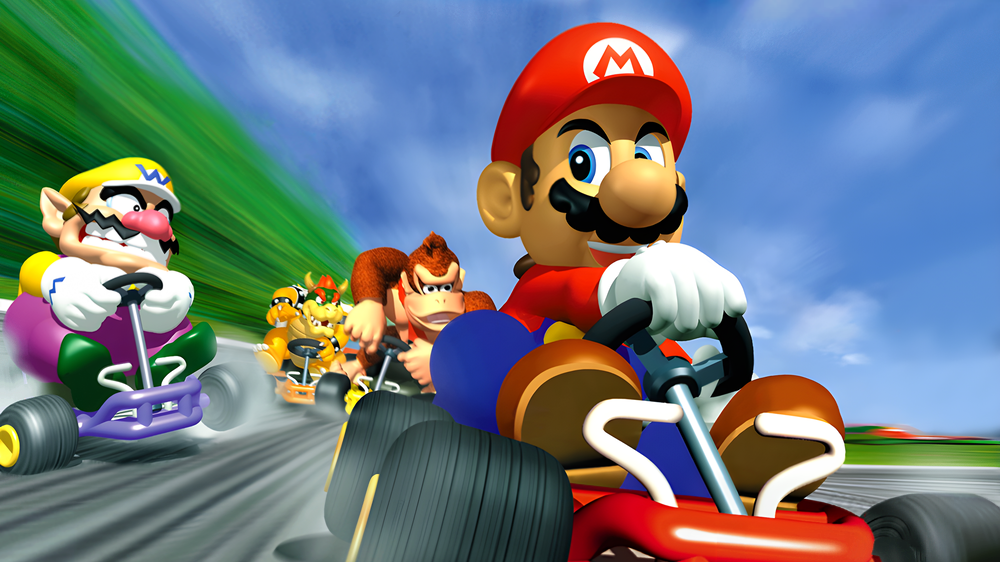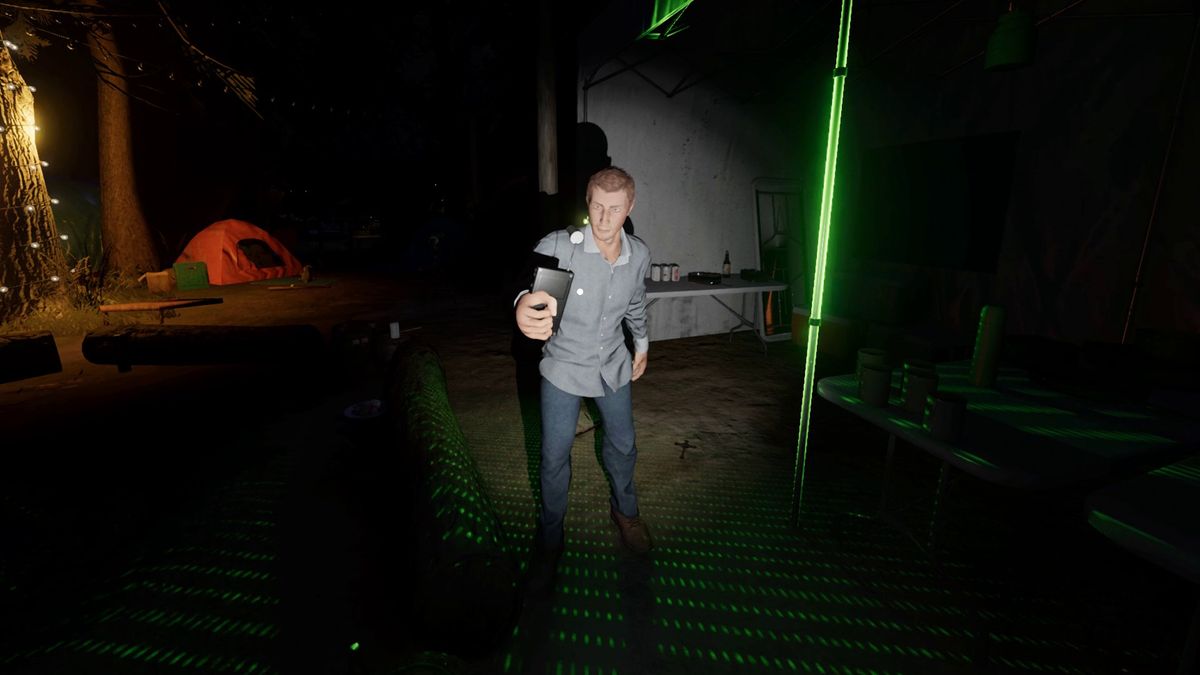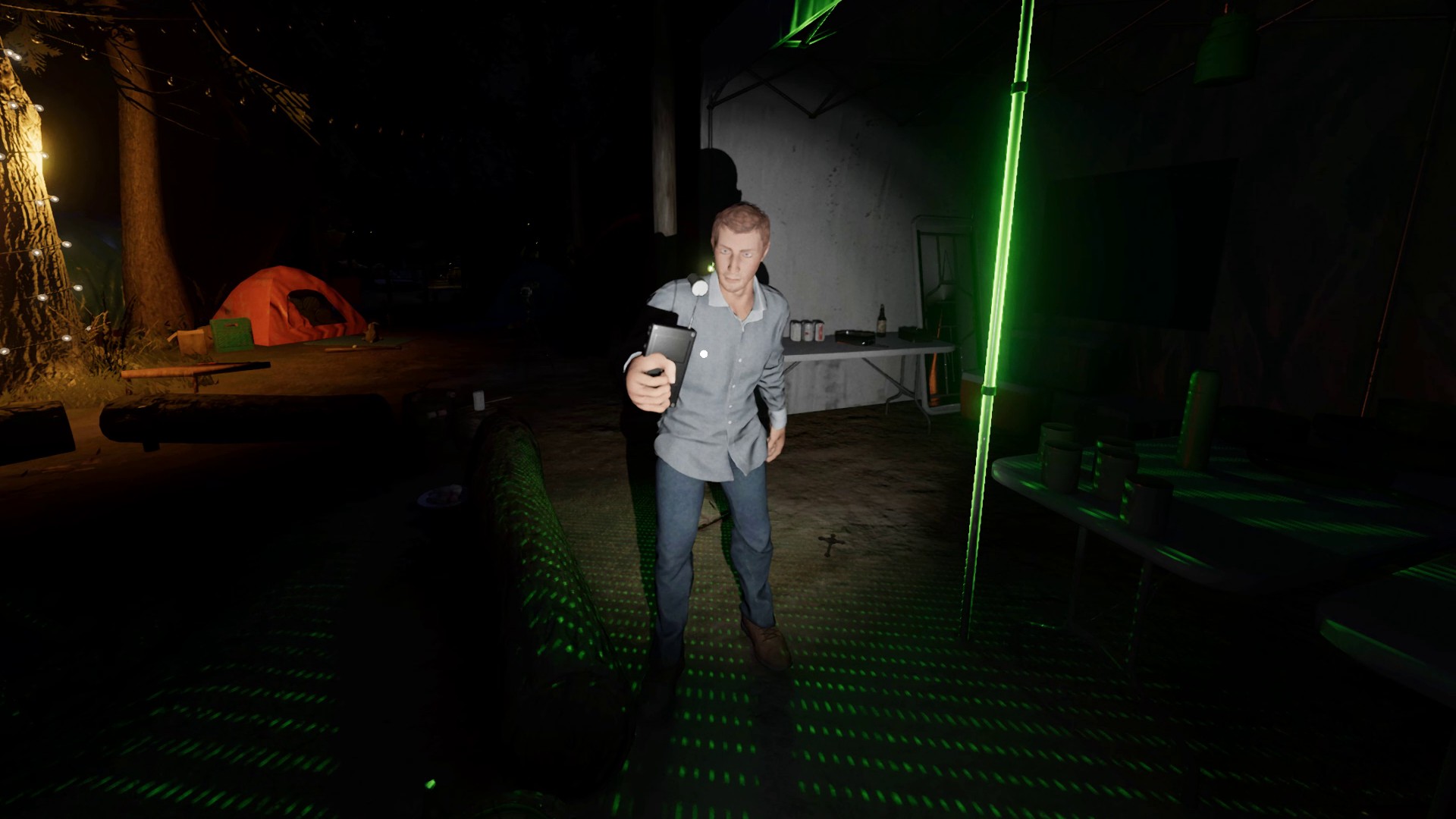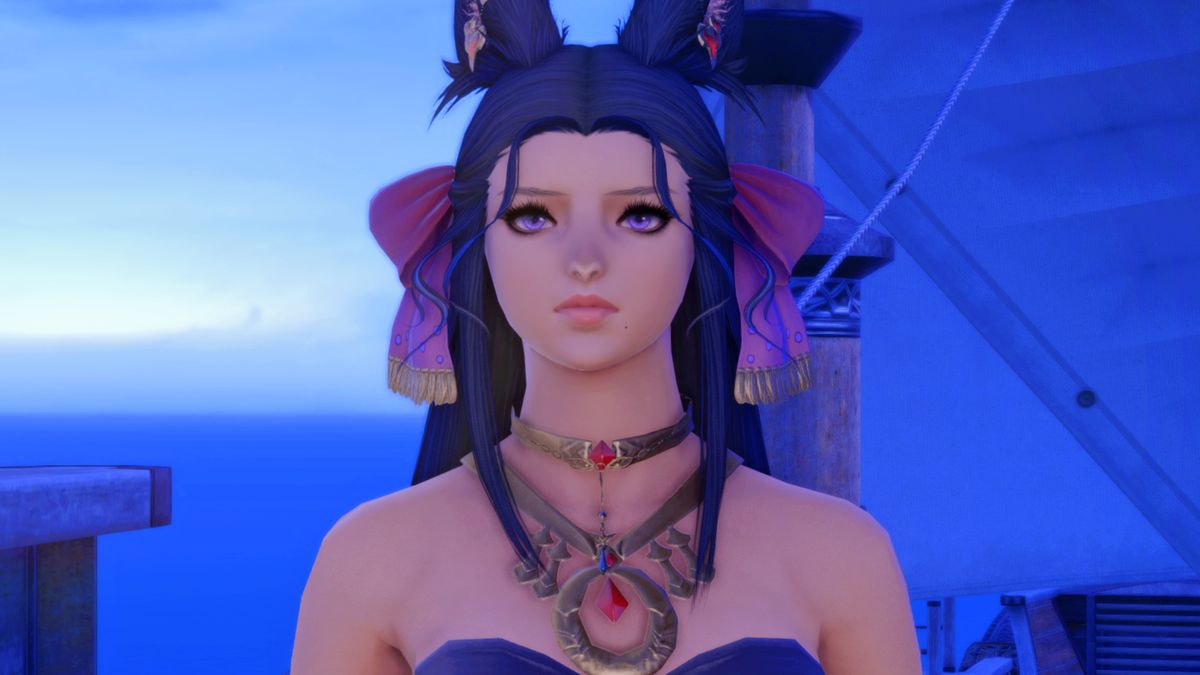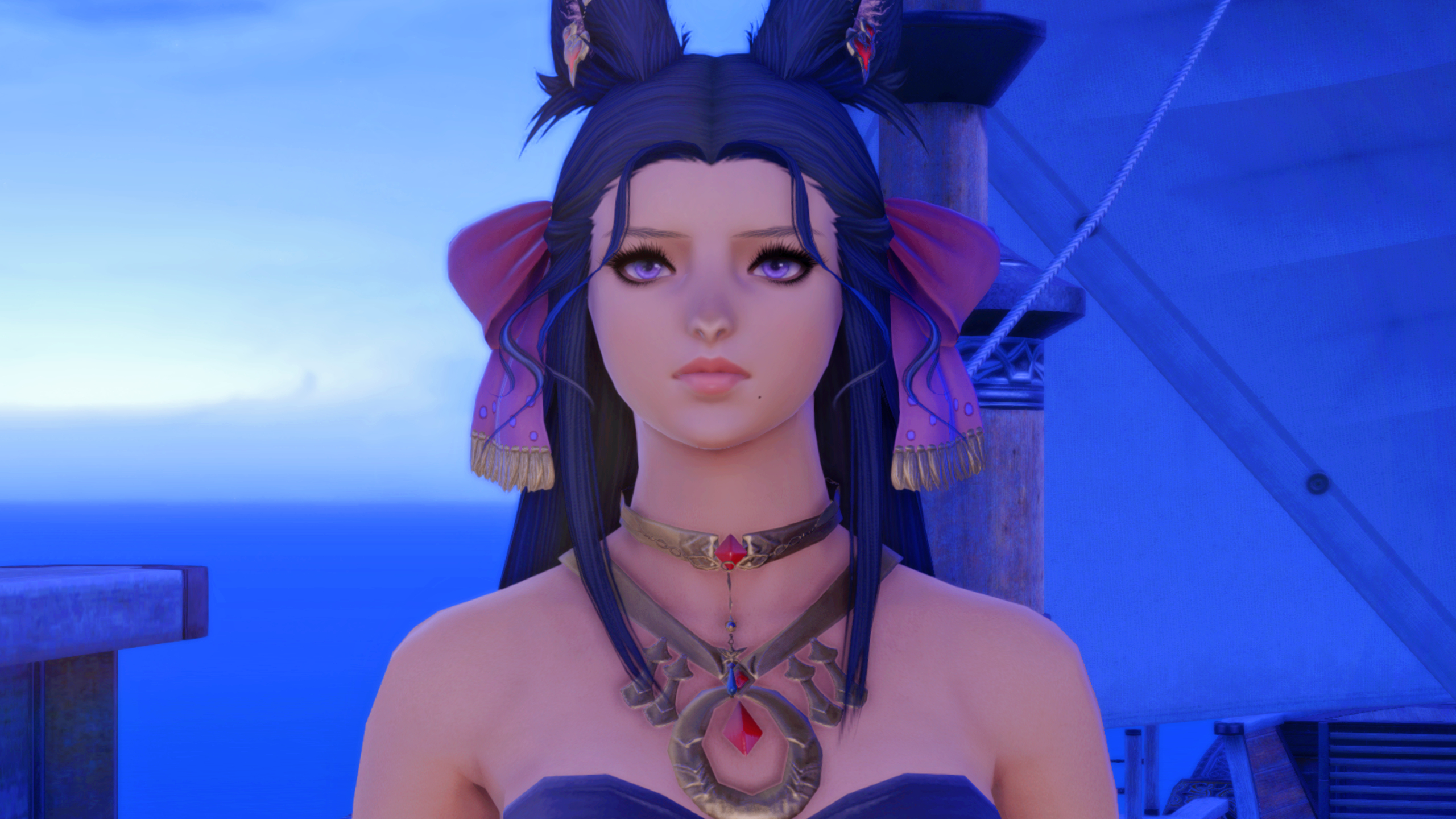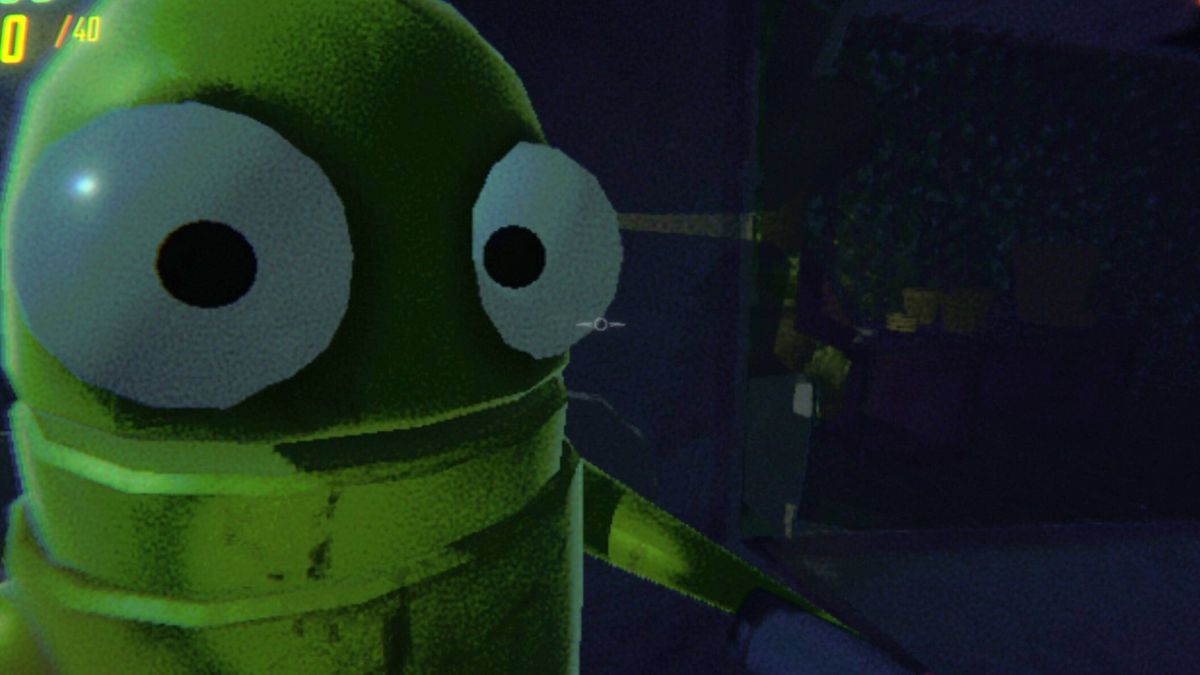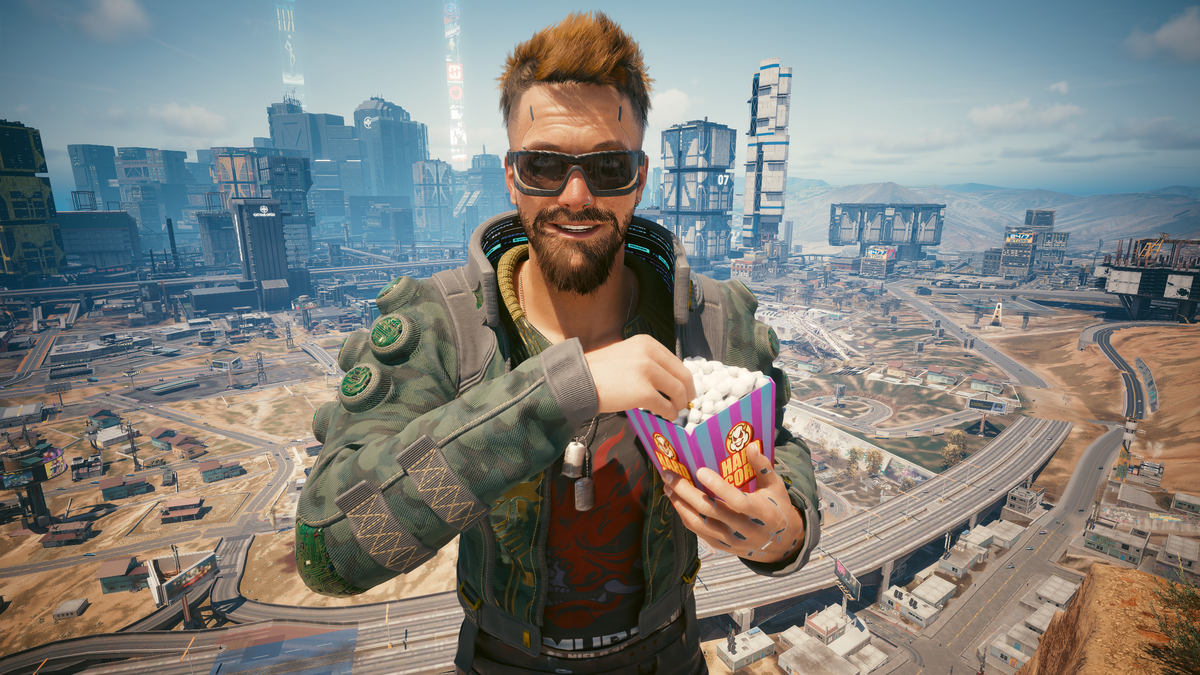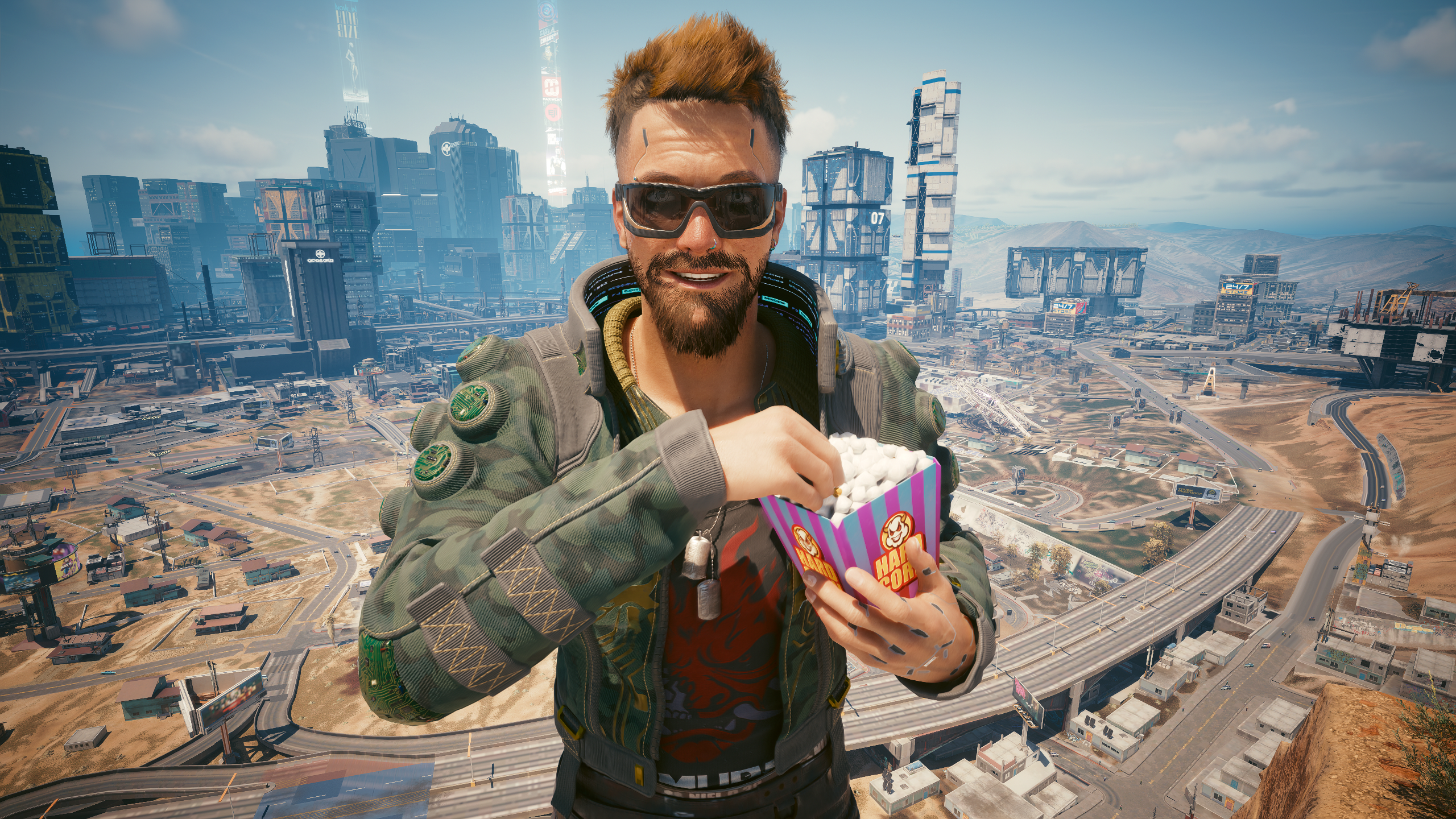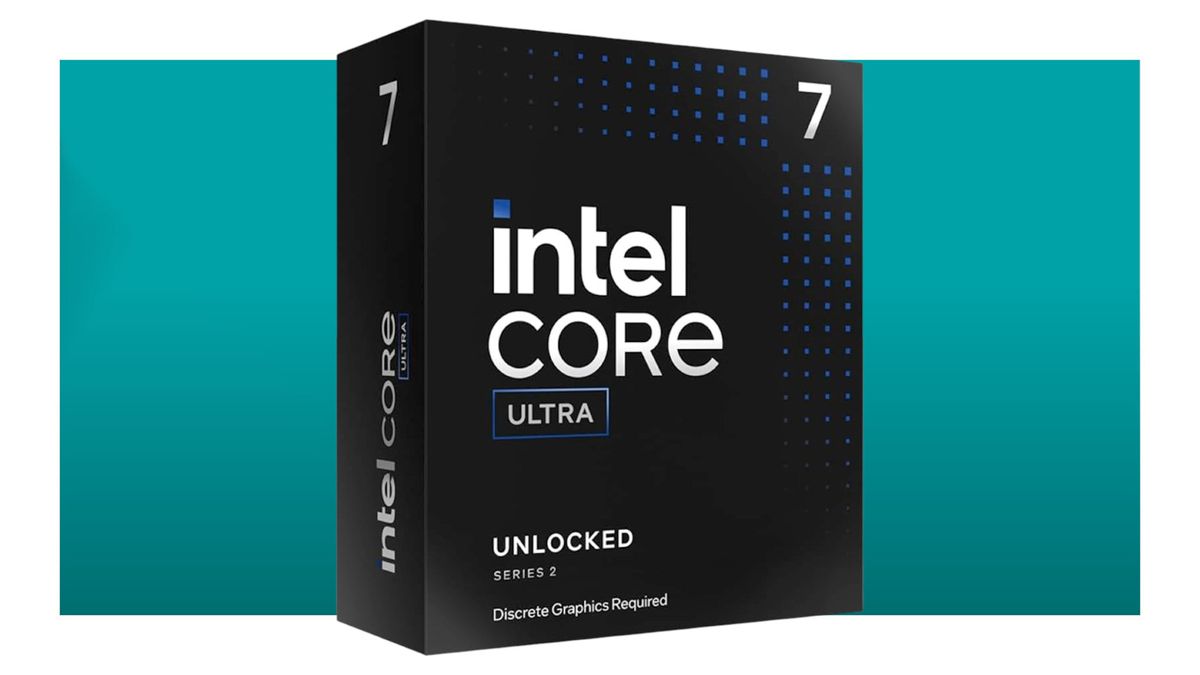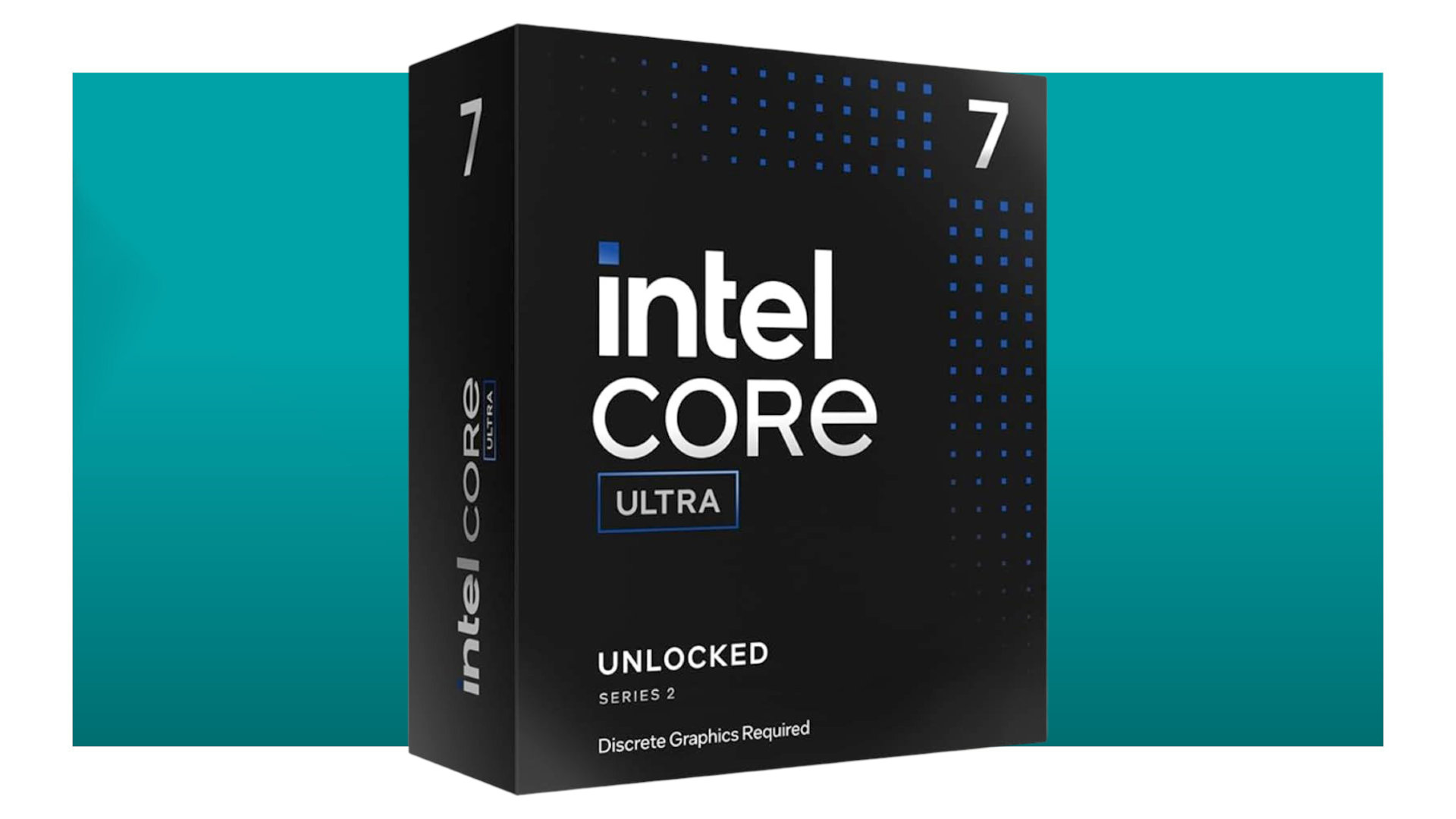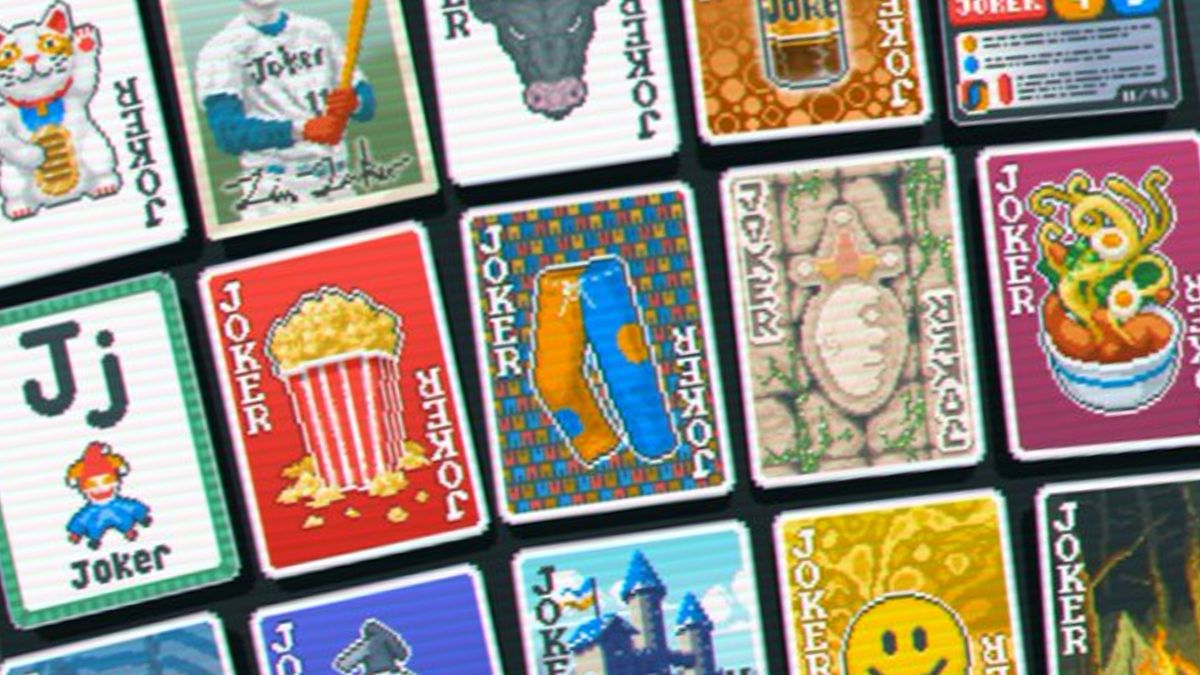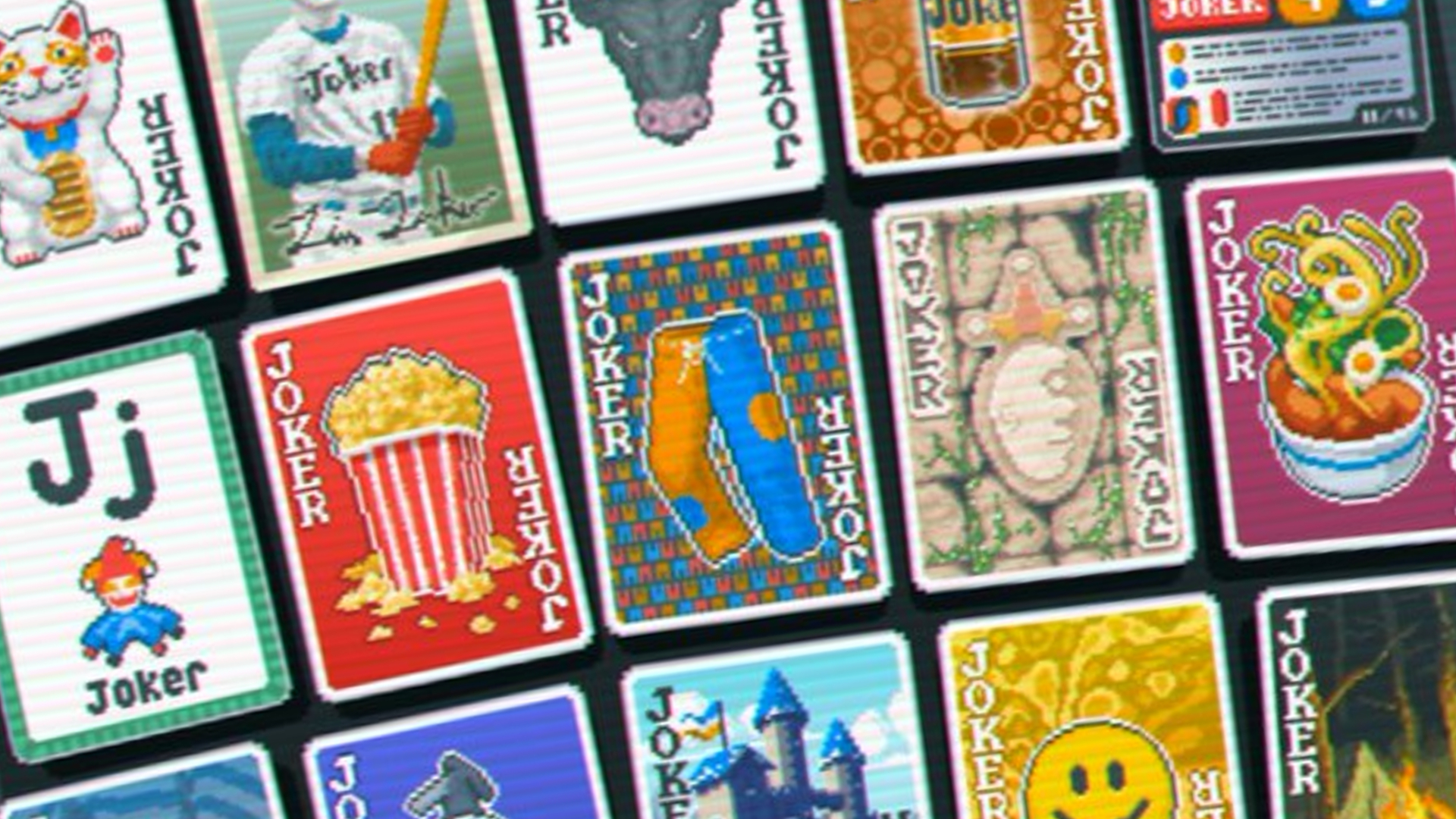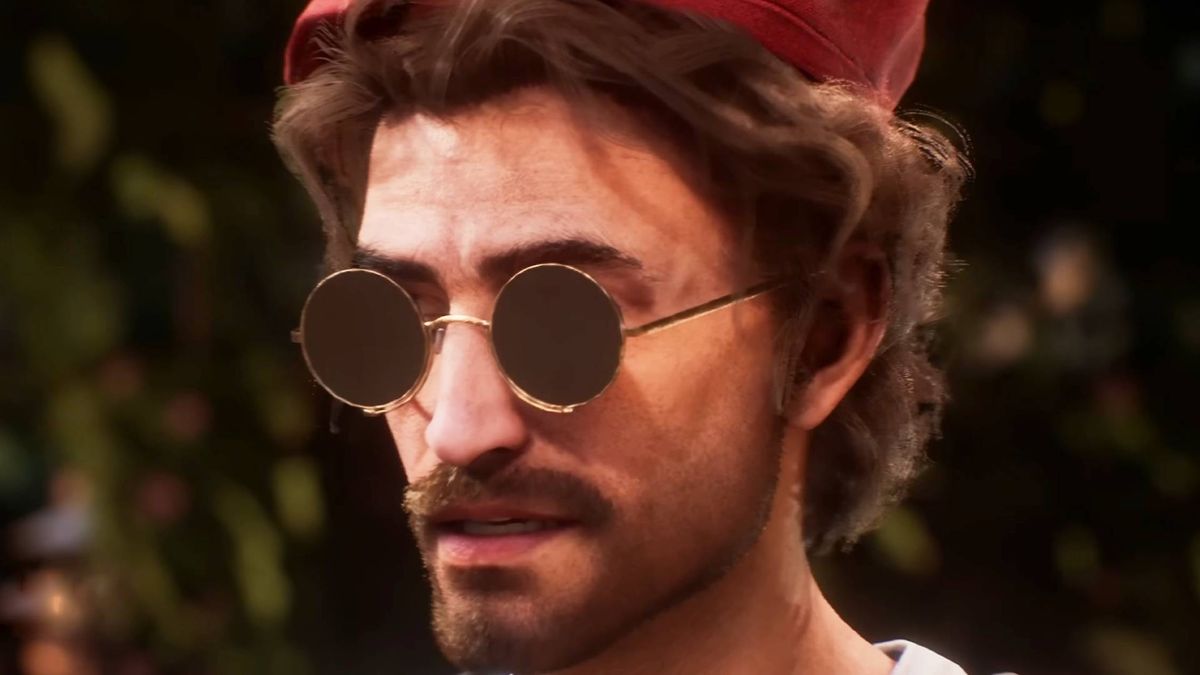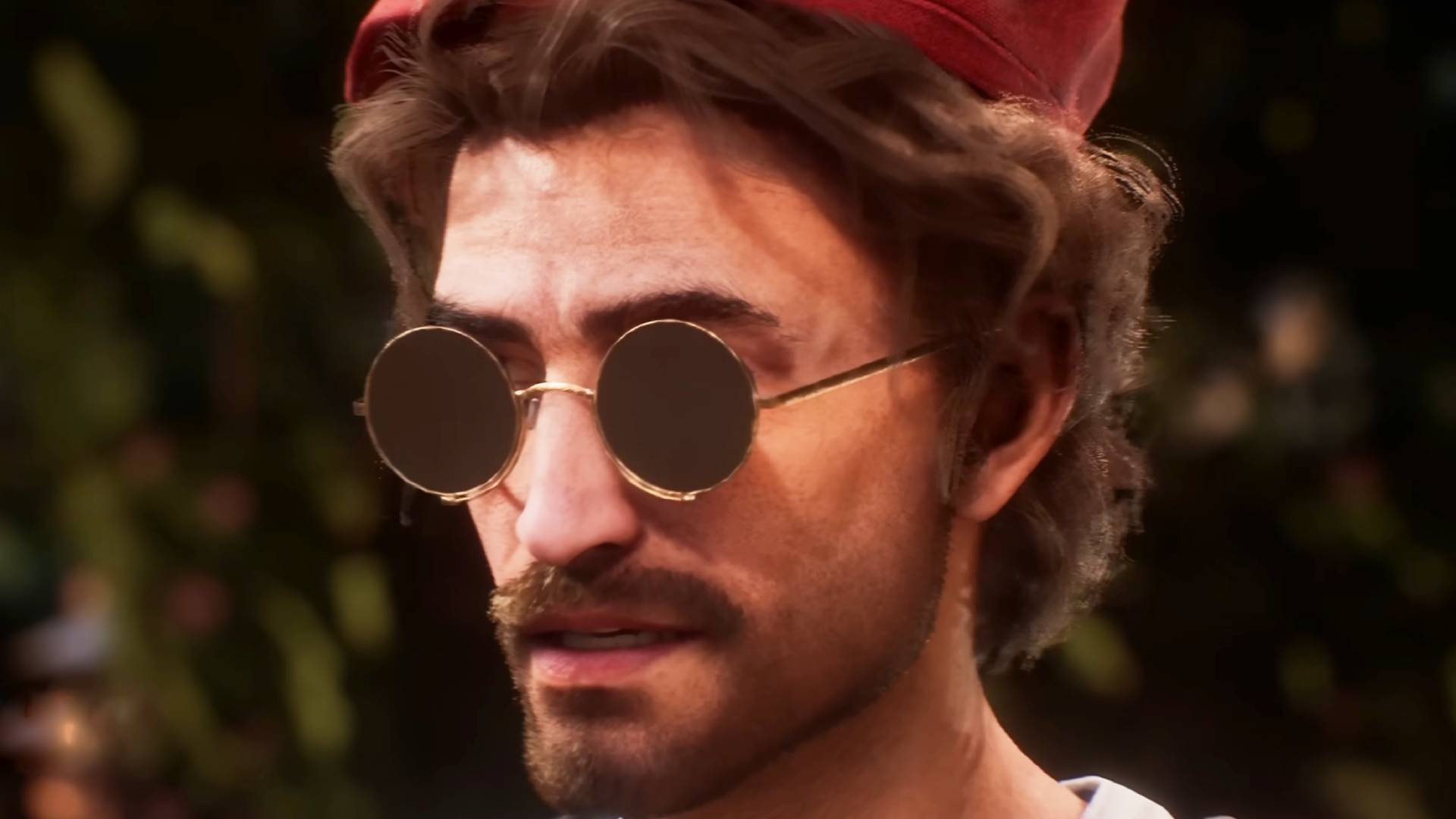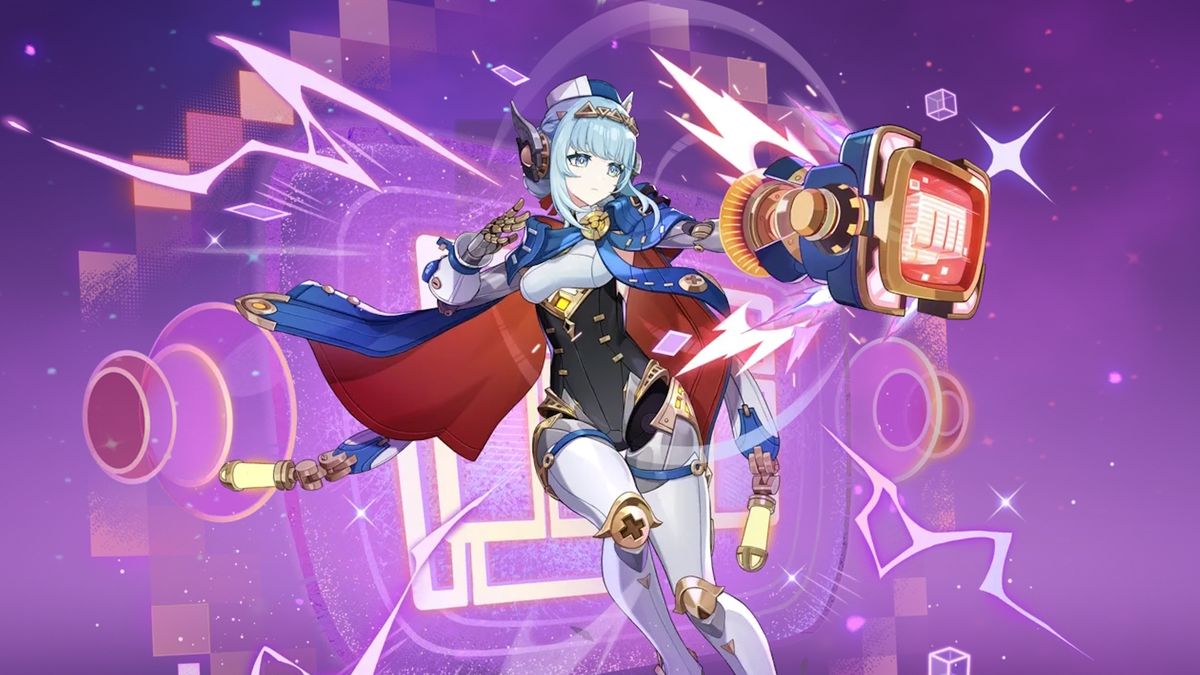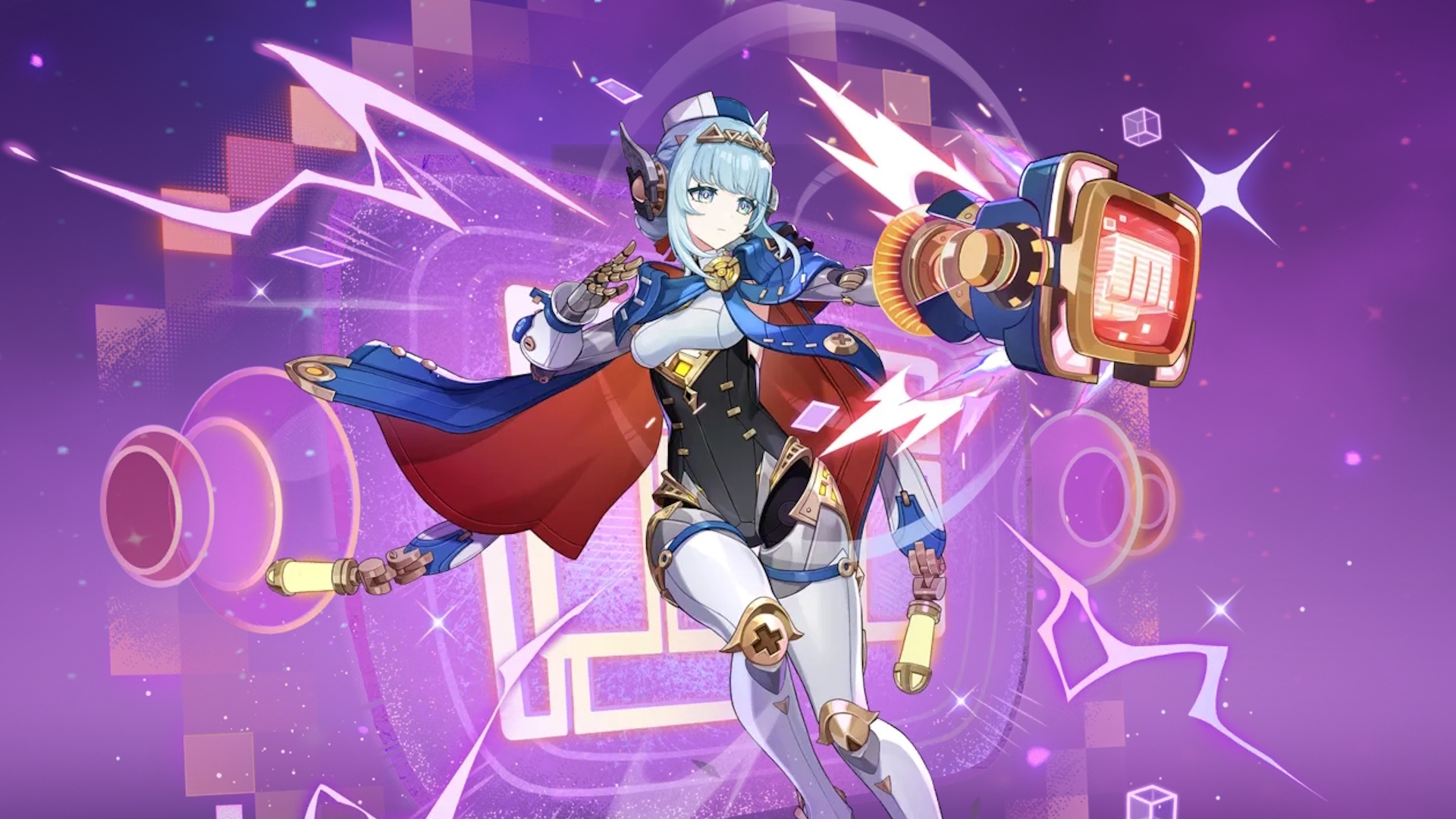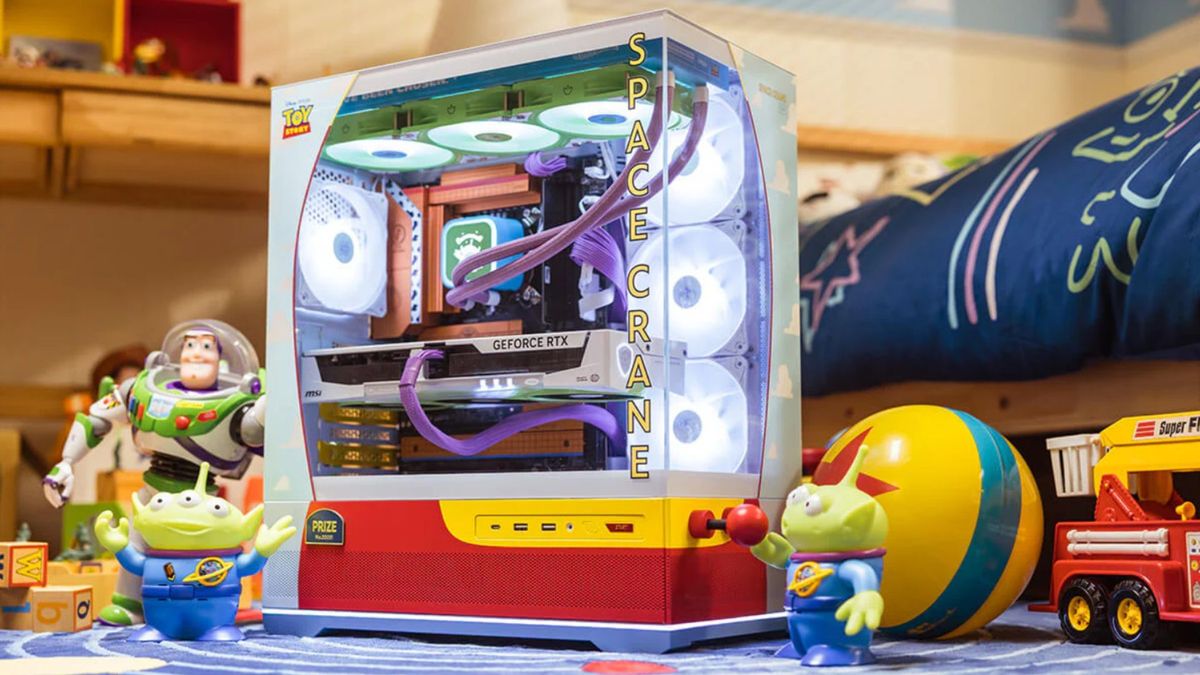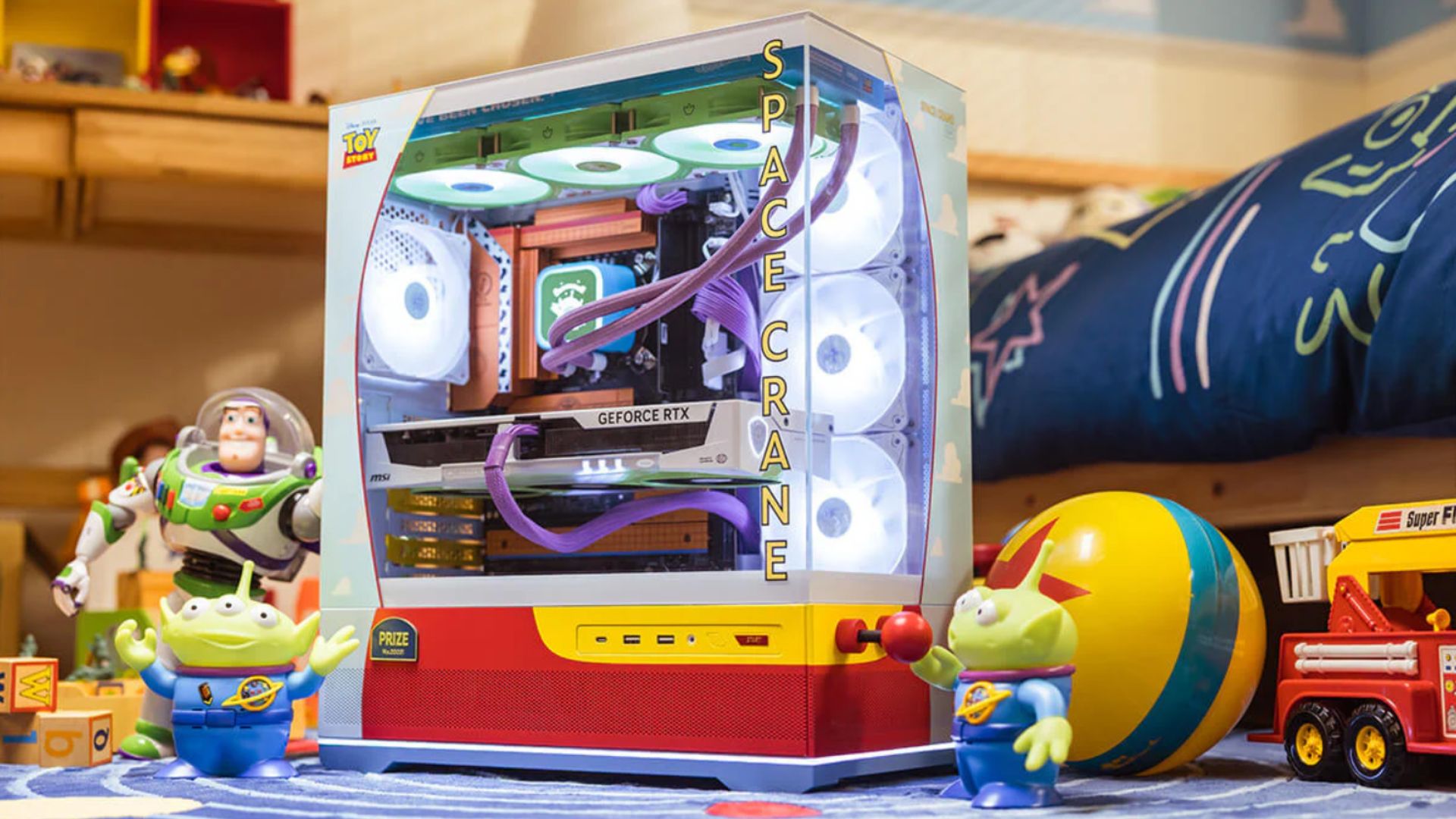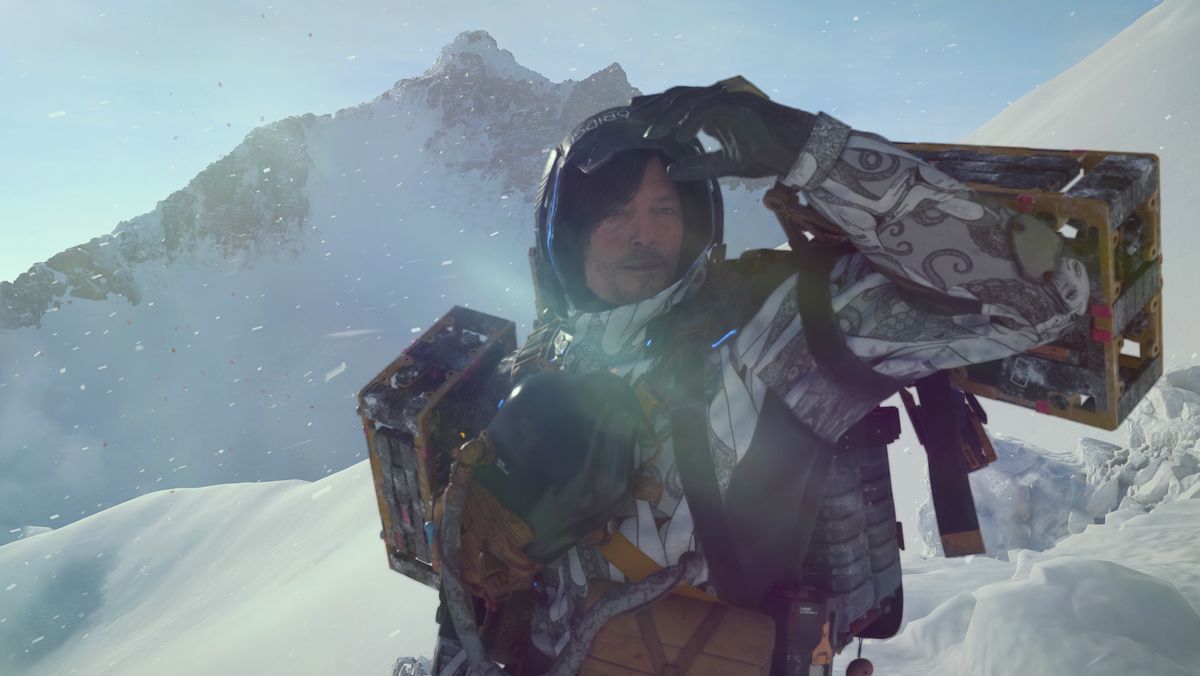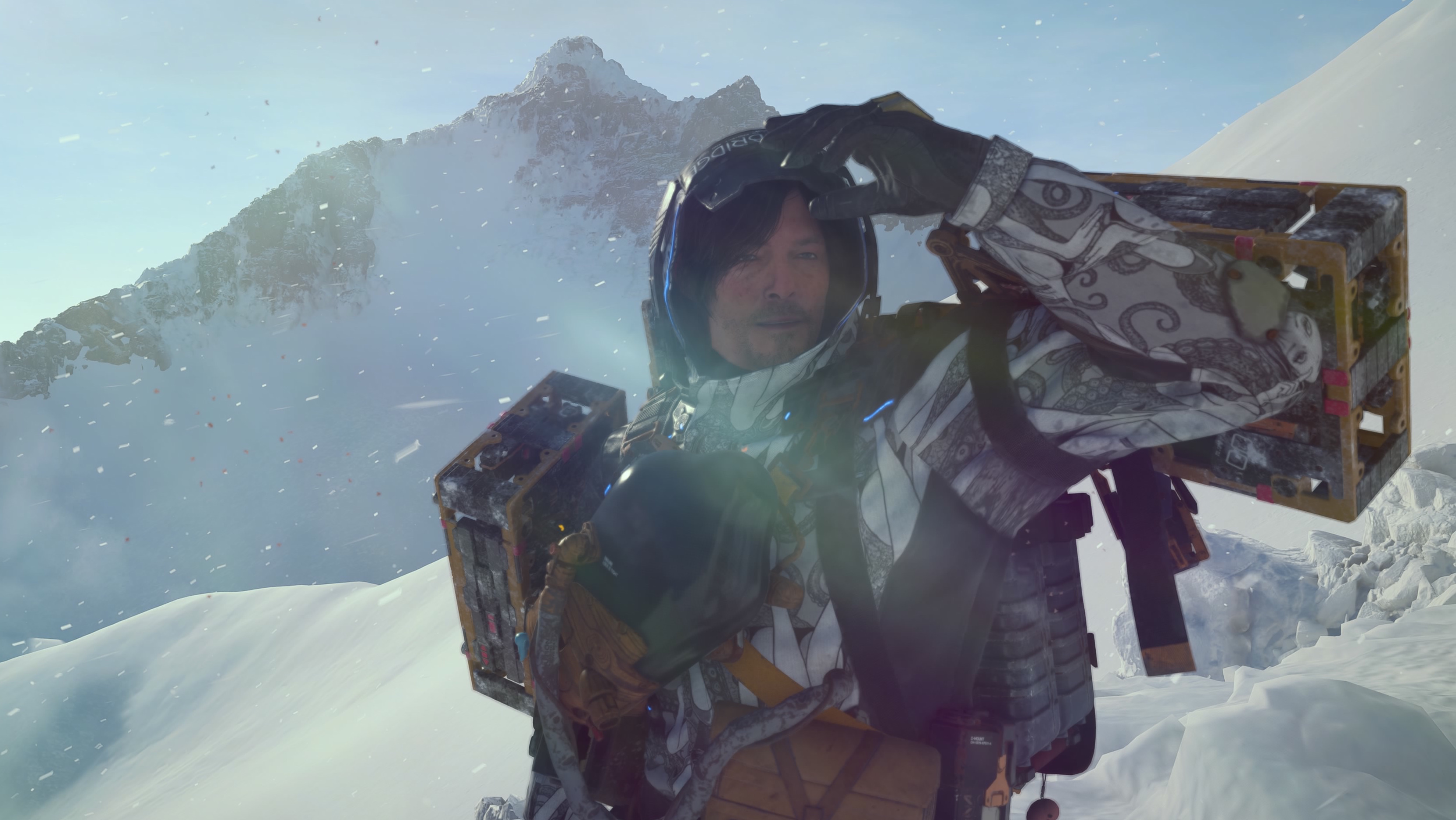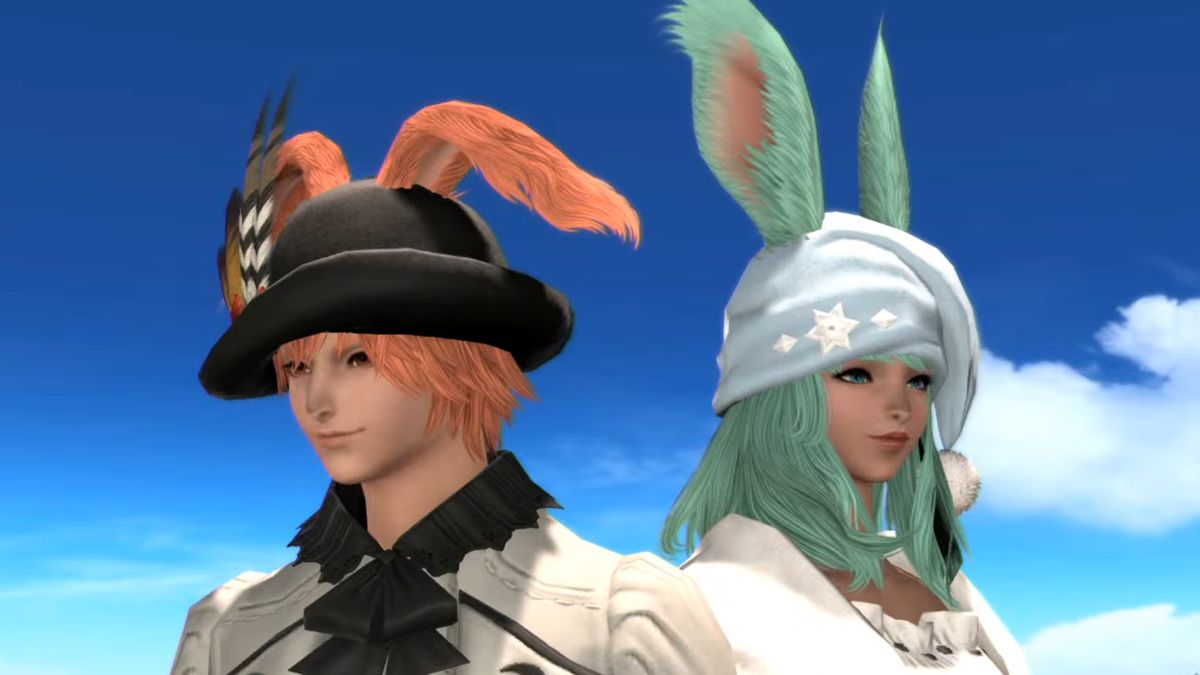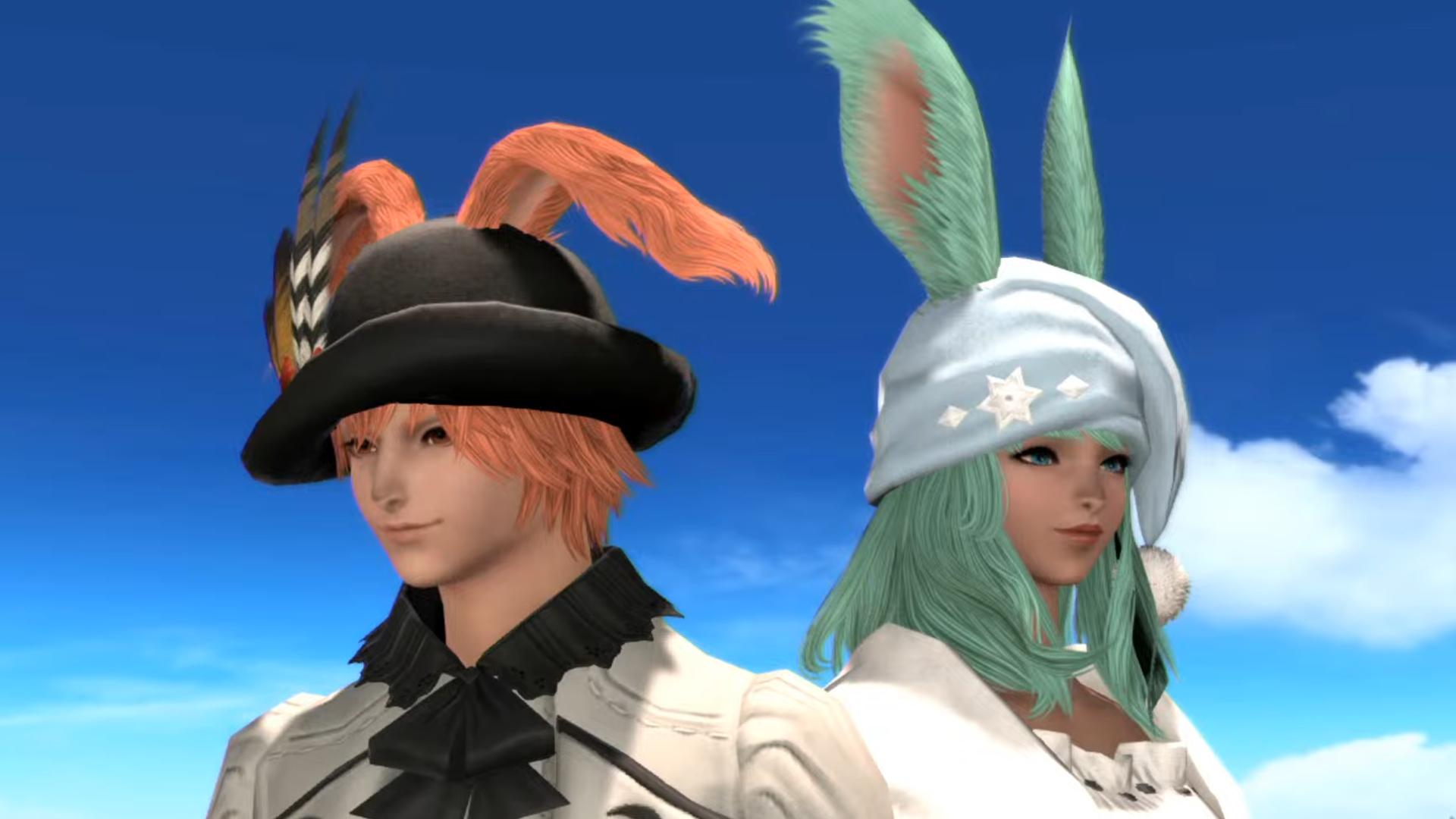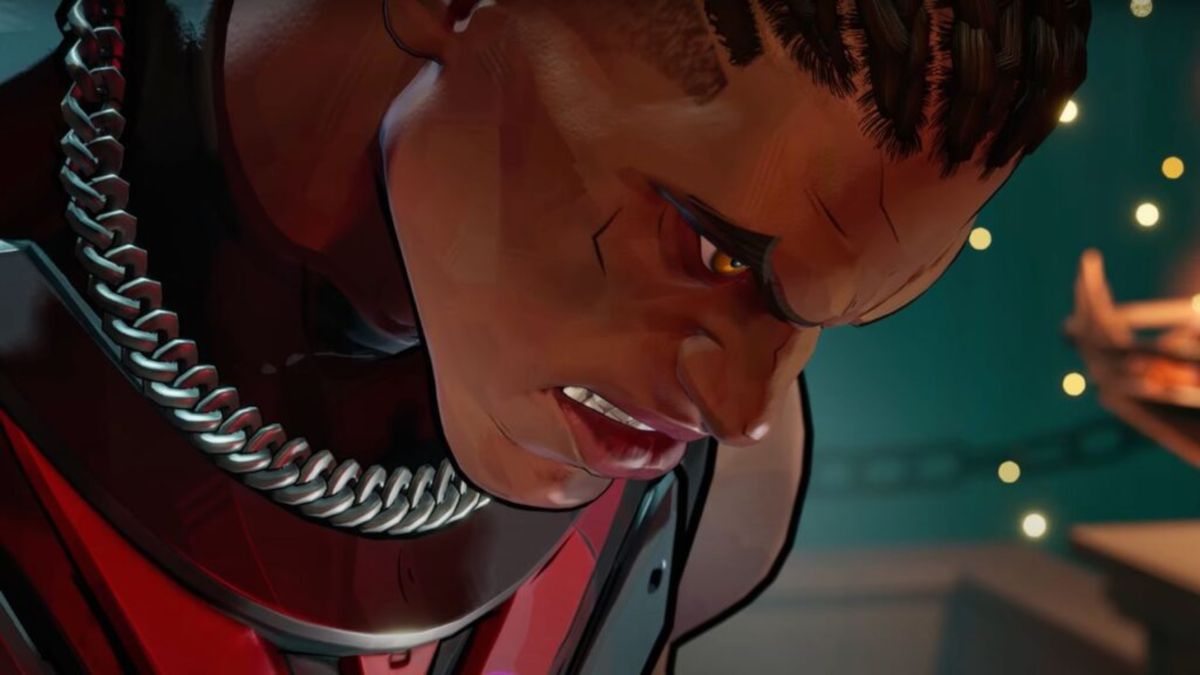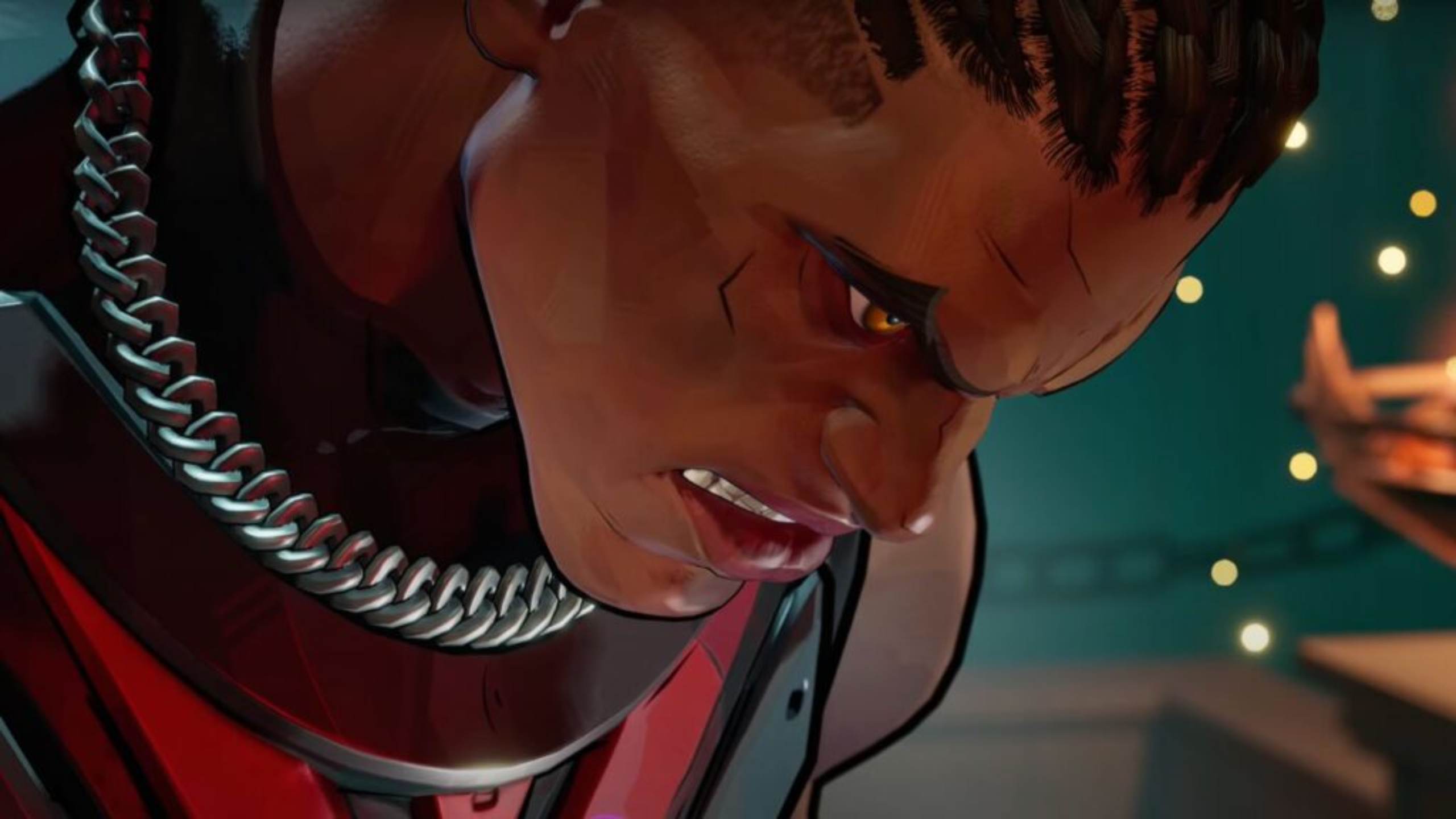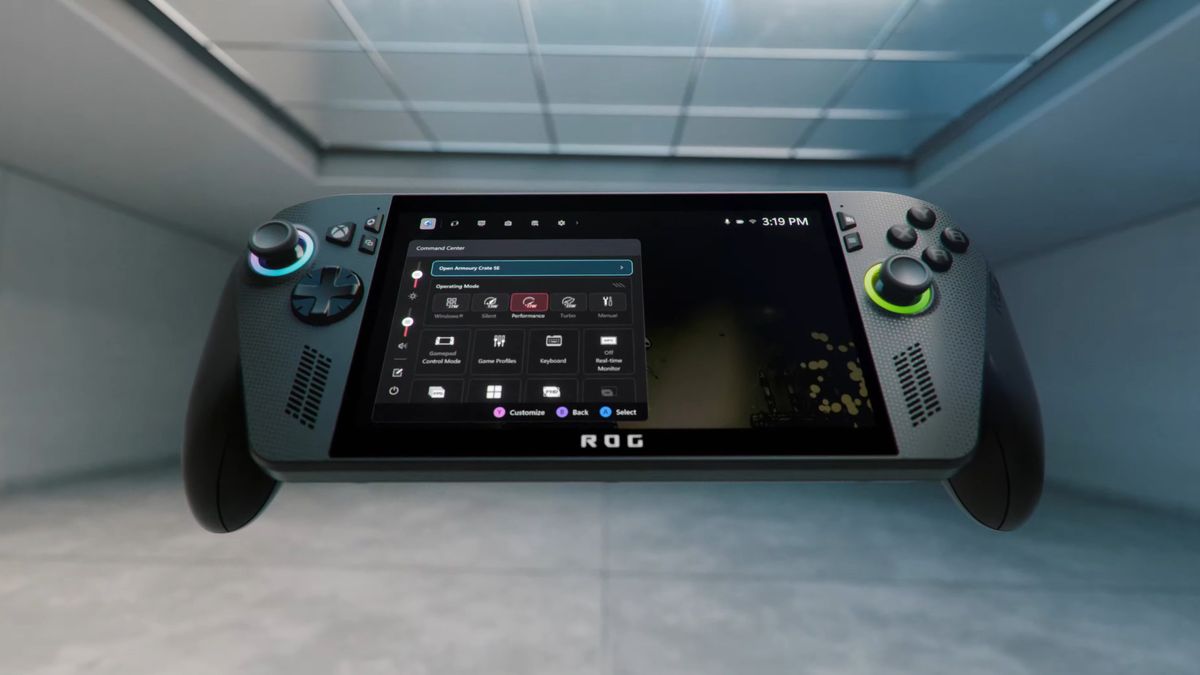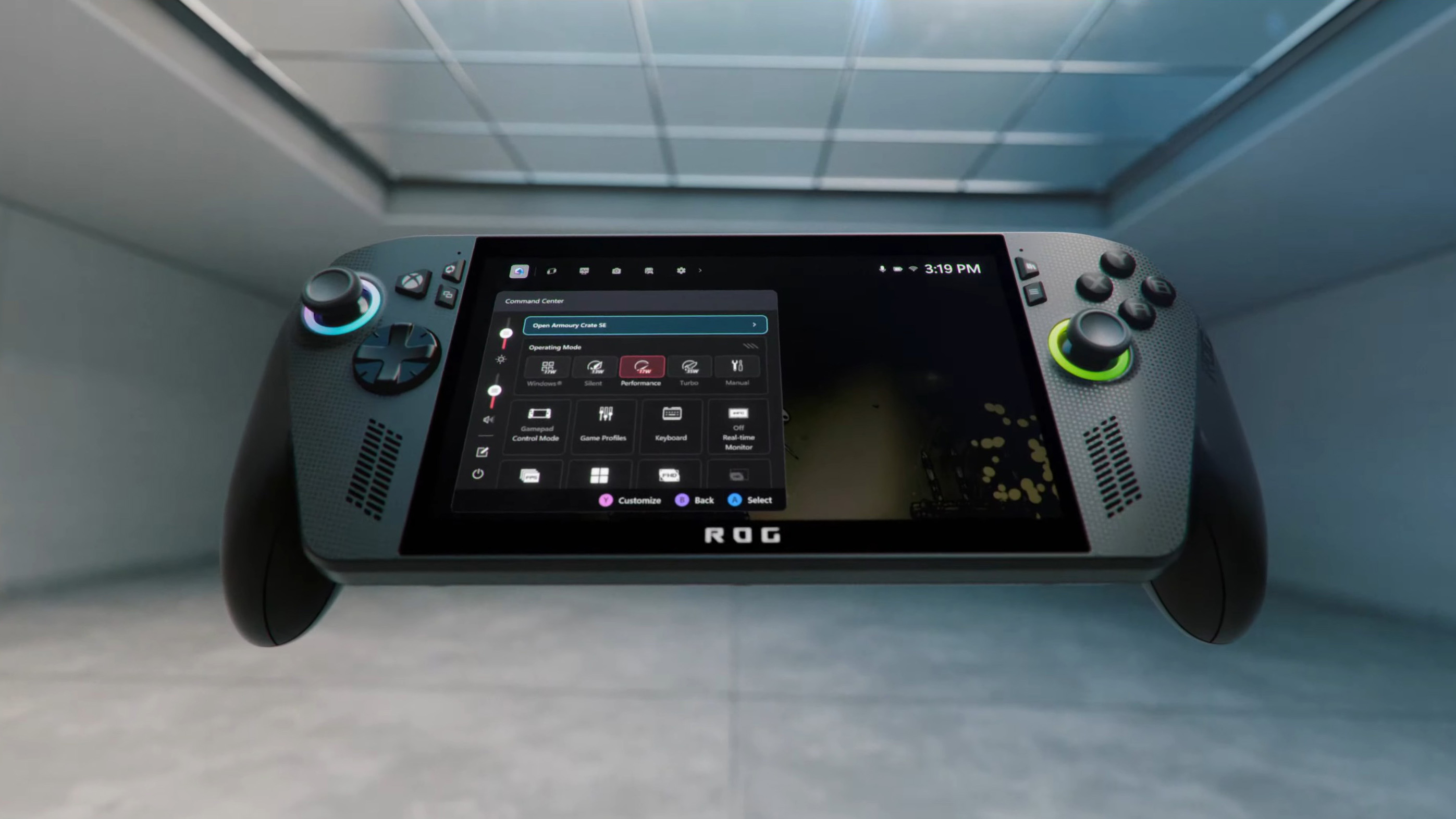
Platypus semen. A giant, oily killer skull. A talking crash test dummy. A puppet soaking in a hot spring. Norman Reedus' nips. No, these aren't straightjacket blabberings due to another vicious bout of temporary madness; instead, they are just 10% of the bizarre things I've seen in Death Stranding 2: On the Beach. But it would be far too easy to dismiss Hideo Kojima's work as acts of weirdness alone. I think we should encourage such wild creativity, and be excited that someone is willing to show us things we'd never even thought of seeing. When viewed this way, Death Stranding 2 stands as an almighty achievement – a triumphant combination of complex sci-fi storytelling and thrillingly evolved stealth-action that impressively builds upon the experimental foundation of its predecessor. It's beautiful, horrific, nuanced, and crucially, a lot of fun. Simply put, it's everything I wanted Death Stranding to be.
I found the original Death Stranding alluring but uneven – an intriguing safe full of possibilities that I couldn't quite crack the code to. So with On the Beach, I couldn’t have been happier to find a sequel that triumphs in what it sets out to achieve, and a blockbuster fulfilment of what Death Stranding can (and should) be. It's more confident in both its storytelling and much-improved gameplay, removing a lot of the friction that previously existed in its systems. It also tells a more focused, affecting story that builds out the mythos of its post-apocalypse setting. If you weren't a fan of the first one, then I'm not sure it rewrites the book to an extent that would make you become one here (even though I’d urge you to give it a go). But if you found yourself, much like me, somewhat teetering on the fence, then you may well find yourself falling in love this time around.
The rhythm will be familiar to those who played the original. Reedus is back as Sam Porter Bridges, once again on a mission to make deliveries across treacherous terrain, often facing human and otherworldly threats along the path. It requires you to be prepared for what faces you on each mission by studying your map and packing accordingly. See a river too deep to walk through in your way? Bring along a ladder or two to cross it with. Spot a warning that BTs (the ghostly threats that stalk certain rainy spots) lurk in the area? Pack a few blood grenades to lob at them. It's this loop of preparation, overcoming both geographical and human/former-human hurdles, and reaching your goal that makes up much of Death Stranding 2's roughly 35-hour runtime when mainlining its story missions.
After a brief tutorial chapter in Mexico, Sam is given the goal of connecting Australia to the Chiral Network (the online system knitting civilization together after a near-world-ending event), much like he did with the USA in the original. Why is he doing that, and who is he doing it for? You'll have to find out yourself. This new continent offers a far greater variety of locations, as it shifts in its appearance and the challenge it presents with regularity. Sandstorms buffet Sam, making keeping balance all the more difficult while also decreasing visibility. Quakes can shift the floor beneath you and send cargo tumbling. And rivers can rise and grow in size if rain comes down with enough force. It further adds to the feeling of combating nature with this future tech, as the Earth itself seems to be fighting back against its increasingly digital future. Should we have connected? It's a resounding "no," it seems, from Mother Nature.
Should we have connected? It's a resounding "no," it seems, from Mother Nature. There’s no doubting film’s influence on this world either, and as a fan of “cinematic games”, I frankly can’t get enough of the artistry on show throughout, even when it may veer into overly referential territory. And those references are keenly on display: The stark landscapes and pioneering strides against the turmoil of nature in Nolan’s Interstellar. The tension-laced delivery of Friedkin’s Sorcerer. The unnerving energy of not knowing what digital ghosts lurk in the dark frames of Kiyoshi Kurosawa's Pulse. Screen-projected flickers of all of these bounce around my brain.
None of this is too different from the apparent cinematic influences of the original, but this time, the lens shifts focus more to action. The dangerous desert expanses of The Road Warrior are no doubt an inspiration, and the guest appearance of Mad Max’s creator, George Miller, is more than a mere coincidence. These are not just cinematic influences for the sake of it, as they inform and instruct Kojima’s approach to gameplay, too, and are reflected in an altogether more action-heavy evolution of the original Death Stranding’s template.
Snakes and Ladders
What initially presents itself as a pretty rudimentary style of stealth gameplay, mainly consisting of crouching in tall grass and performing silent takedowns, rapidly reveals its layers as your arsenal grows. For example, there’s the introduction of a game-changing tranquiliser sniper rifle, which is something I found super satisfying to pick bandits off with. It may never truly become the stealth-action playground of creativity that Metal Gear Solid V: The Phantom Pain is. But it frequently evokes that same feeling in brief moments, delighting me each time it does. Death Stranding 2 offers a lot more flexibility in your approach compared to the original Death Stranding, making its combat much more engaging as a result. And you’ll need to become accustomed to a variety of approaches as well, because there’s no avoiding confrontation and the many forms it takes this time around.
I never tired of launching my little drone friend Dollman into the air and using him as a portable eye in the sky as I scoped out enemy outposts, marking and identifying my prey. They never notice the small puppet floating above them, which might be a little unbelievable, but also makes me feel like I’m getting away with murder. Enemies develop as you progress, and knowing which are armoured, which have higher mobility, and what ammo type they’re vulnerable to adds variables to encounters, meaning you can't always rely on the same rinse-and-repeat tactics. That being said, if you're a decent enough shot with a sniper rifle, you can clear out most bases before enemies have time to reach you. Crucially, it's just as fun when it goes wrong as when it goes right, though.
There's a playfulness in Death Stranding 2’s approach to combat that just wasn't present in the original.There's a satisfaction in a perfectly planned attack going smoothly as you pick off each guard with a tranq dart, but a thrill when one shot goes awry and you're made to scramble, juggling your arsenal as enemies descend upon your position. Shooting the driver of an on-rushing vehicle before stealing it to run over his friend is always fun, as is dancing around them in a machine gun-turreted off-roader of your own design. Overall, there's a playfulness in Death Stranding 2’s approach to combat that just wasn't present in the original’s simpler, less imaginative system. It brings a dash of power fantasy to the mix, adding to the fun and making it a wholly more enjoyable game to play.
Enemy AI may still not be the sharpest, but it does enable some of that "playing with your food" energy that's always welcome. I played on the normal difficulty and never really found any fight a challenge until things cranked up a little towards the end. This lack of friction is deliberate, though, with the increased toolset, including many different gun and grenade types of varying loudness, allowing you to get through its story at a good pace. This isn't Sam's first rodeo, so when he’s setting out on a continent-spanning trek this time, Death Stranding 2 reflects that by making you feel like a more powerful Porter Bridges. This is a journey, not something that asks you to replay sections if you do something wrong or walk into “mission failed” screens unless you really, really mess up. In fact, even boss battles can be skipped entirely if that particular challenge isn't what you're here for. This isn’t something I'd recommend, though, as they offer some of the most striking spectacles Death Stranding 2 has to offer – a giant tentacle mech is an early favourite, but there are many more monstrosities following later that I'll keep hidden here.
Your action chops are also firmly put to the test in the sections that have you face off against newcomer Neil, played with a subtle intensity by Italian actor Luca Marinelli. Scrambling around gorgeous architecture to find new weapons in a series of tense shootouts and adding your own flashes and bangs to the fireworks display backdropping these showdowns is a thrill. They're particularly stunning stages full of flame and beauty that made me feel I was briefly being taken away to a different game. But those lashings of cinematic style are painted across each encounter, and the many, many cutscenes that bookend them. Having time slow down after dispatching an enemy is not only very helpful when faced with multiple threats, but adds a slick layer of style to each gunfight. No aspect of Death Stranding 2 is left untouched by its blockbuster aspirations.
But as both elements and entities fight against you with more vigor this time around, you're in turn given new abilities to combat them with. Unlike the first game’s relatively barebones character progression, now skill points can be used to unlock fresh tools and boost your stats sheet. Death Stranding 2 is by no means an RPG, but it does offer greater and much-appreciated variety when it comes to building out how you want your Sam to play. Want to be a sneaky Sam? Invest in the ability to cover your tracks by scrubbing out your footprints. Want to be shooty Sam? Augment his arsenal so it packs a heavier punch. Or perhaps you fancy yourself a budding meteorologist and just want to accurately analyse the weather and know what BT-infested spots to steer clear of. You'll ultimately be treading the same set of missions as every other player, but the ways you can choose to approach each one are far more varied this time around.
From coffin hoverboards to homing missile mechanical dogs, there really is no shortage of creativity on show.These perks can also be freely plugged in and out (reminiscent of how Nier Automata's fantastic chip system functions) and offer great flexibility, further enhancing your freedom when preparing for specific types of missions. Upgrades get unlocked in accordance with how you’ve been playing; if you take a combat-heavy approach, you’ll be rewarded with new skills like a semi-automated lock-on ability for your guns. Find yourself dishing out likes to other players' items you see, such as a helpful cargo catapult? You’ll unlock a perk that increases the number of other people’s online constructions, like bridges and generators, that appear in your world. It’s a nice touch that further makes Death Stranding 2 feel like an experience that is in step with you, and another indication of its formerly rough edges being sanded down for a much more enjoyable time.
On top of perks, there is also no shortage of new gadgetry and weaponry available to Sam. Completing side missions and increasing your star ranking with each of the outposts dotted around the map unlocks these options at a consistently good rhythm, as well as some that open up when you complete certain story events. The blood boomerang is particularly effective against BTs, for example, but comes at the cost of draining your lifeforce with every hurl of it. And the tools get weirder and wilder from there, coming at such a regularity that you'll be moving on from one shiny toy of destruction or subterfuge to the next with each mission. From coffin hoverboards to homing missile mechanical dogs, there really is no shortage of creativity on show.
But it isn’t just in combat that these accessories have their uses either, because no matter how much Death Stranding 2 has cranked up the action this time around, it is still fundamentally about porting cargo from one location to another across Australia. That vast expanse naturally leads to new delivery systems. Yes, turns out there really is nothing on Earth like a genuine, bona fide, electrified six-car monorail. This new structure is a godsend when it comes to a handful of missions that require shipping hundreds of kilos of chemical materials over a rocky coastline, but it does call on quite the combined construction job between you and the online community.
That being said, I did settle on travelling on foot as little as possible quite quickly. On the Beach is very kind in that it gives you a vehicle very early on this time around, especially when compared to the many hours it took to fire up an engine in the original. I therefore made many of my long-haul treks via a custom off-roader equipped with a handy auto-pick-up tool for loose cargo that I nursed for much of my playthrough. It served me incredibly well, and I had a fantastic time treating most of my playtime like a post-apocalyptic rally racer, albeit at slower speeds.
It just feels like some of the original Death Stranding’s friction has been removedAgain, it just feels like some of the original Death Stranding’s friction has been removed, and for the better, with the decision to introduce this helpful equipment early as opposed to it being held hostage for many, many hours. I do still think that managing the cargo on these trips is a bit of a pain, though. Inventory systems and menus have been streamlined a bit but are still fiddly, and I spent a little more time than I'd have liked scrolling through them over my few dozen hours.
The missions themselves are incredibly moreish, though, with that “just one more job” itch that I always had to scratch. There’s a great sense of forward momentum which aids this sensation hugely, with backtracking, thankfully, a rarity in the sequel. Whether it's recovering a lost kangaroo for some Scottish popstars or delivering a pizza to a VTuber, you never quite know what’s around the corner. Varied mission conditions also keep things fresh; these range from having to complete orders within a set time limit or being extra careful with fragile cargo. Again, these parameters force you to adjust how you prepare for each mission and ensure that you can’t just use the same toolset and methods on every run.
It's this consistent drive alongside a drip-feed of new equipment that makes the whole experience more rewarding. The overall structure of Death Stranding 2’s campaign is leaps and bounds above what came before, and whether it's unleashing bullets into a teleporting mech or gently navigating a river, it all feels intertwined beautifully and serves the complex sci-fi story it aims to tell to fantastic effect.
Life's a Beach
Set 11 months after the events of the original, On the Beach’s twisting tale begins with Sam attempting to settle into a quiet life off the grid with baby Lou but, inevitably, that dream is swiftly ended. Where it goes from there, I won’t even dare to spoil, but I guarantee that you won’t see even half of its reveals coming.
I can say, though, that there’s an ongoing trend of viscosity throughout. Tar, sludge, oil, blood – you’ll wade through it all. But it's also thick with intrigue, as the secrets continue to be uncovered in a flurry of ideas so dense I’d struggle to point to its like elsewhere. The themes it tackles are multifold. Some focus on a more personal level, and others are global. The latter is a treatise on modern life and how technology infests every part of it. It’s a strong story of how increased existence in the digital world eats away at our souls as humans, as physical interactions – especially in a post-COVID environment – became all the more precious. I can’t help but feel that Kojima is bristling with thoughts about how art and individual expression can never be replaced by artificial intelligence, no matter how it's forced upon us.
These are themes Kojima has been writing about for decades now, but still remain frustratingly topical.And then there’s commentary on gun culture and our world's obsession with building bigger and better weapons. These are, of course, themes Kojima has been writing about for decades now – all the way back to the original Metal Gear Solid in 1998 – but still remain frustratingly topical and worthy of continued commentary on in a modern context. It's a credit to the storytelling that all of these concepts shine through, without getting too bogged down or obscured by the sci-fi trappings they could so easily sink into.
But Death Stranding 2 doesn’t only look outwards. It’s as introspective as any of Kojima's work to date. Metal Gear Solid always looked at geopolitical and nuclear issues on a wide scale, and the original Death Stranding challenged our ability to truly connect as humans in a digital age – a stark reality when faced with the pandemic it pre-empted by mere months. But On the Beach asks questions about the issues posed in that original text. It's self-analytical, but rarely gazes at its navel, delivering a knockout story that works on many levels.
The theme of connectivity, fittingly, weaves each disparate part together by exploring not only how we connect to each other, but with our own pasts as well. What we choose to hold onto, and what we choose to let go. I don't think it's any coincidence that Neil resembles Solid Snake, a character whom Kojima has had to make peace with cutting ties with ever since his departure from Konami a decade ago. Death Stranding 2 almost feels like a funeral for his beloved bandana operative.
While the cast of characters may be as subtly named as referring to me as Simon Reviewman, they do all possess nuanced personalities that reveal themselves at frequent junctures in the story. Small idiosyncrasies, such as face twitches upon revelations being heard or the faintest of tear drops falling down a cheek, really bring a level of depth to these people that their stunningly realised faces deserve. The motion and performance-capture technology is simply astounding, allowing for every pore and reflex of the actors to make their way onto the screen.
Norman Reedus continues his stoic portrayal of Sam Porter Bridges and anchors the story with a calm, centered approach. I do still find Sam a fairly impenetrable character to connect with on an emotional level, though, as he again serves as a vehicle for the story rather than the personal heart of it. He's given more range to work in this time around, but his not-too-high, not-too-low performance again allows for the supporting cast to shine. Lea Seydoux beguiles as Fragile, a layered character that the French actress elevates even further. Elle Fanning is fantastic as the enigmatic Tomorrow, and the mysterious Red Samurai is dripping with cool. It’s the kind of sleek style we've come to expect from artist Yoji Shinkawa ever since Psyborg Ninja first dashed onto the screen in 1998. He’s a master character designer on top of his game, and Death Stranding 2 really gives him the opportunity to cook again and again.
Troy Baker returns as Higgs, who pretty much steals every scene he enters.I also have a soft spot for the aforementioned Dollman, who makes the journey a little less lonely by accompanying you at all times on your utility belt. He’s effectively a version of God of War’s Mimir, but instead of funny retellings of myths and legend, we're treated to high school-level interpretations of the themes of Moby Dick and occasionally telling you that you stink. The standout performer this time around, though, has to be Troy Baker's return as Higgs, who pretty much steals every scene he enters. He’s been given license to bring an even more operatic edge to the character this time around, complete with a chilling mask and crimson electric guitar to match. A Reddie Van Halen, if you will.
It’s a big role in every way, and matches the grandeur of the story being told, but in truth, there’s not a single poor performance to be found within the cast, each being given moments to shine in both loud and quiet pockets. For as much cargo as there is being lugged around this world, it's the emotional baggage of the characters that weighs the heaviest, and that pressure builds and builds until its jaw-dropping final few hours, of which I can safely say I’ve never seen anything quite like before.
While I love how it ends, I do wish it started a little thicker and faster. It's so full of mystery that going a couple of hours of deliveries before finding out the next big nugget of the main plot can feel a little agonising. Multiple hours can go by without seeing key characters, and there are a handful of instances when your home base ship is grounded and you need to complete some deliveries before it can get on the move again. These do hinder momentum at times, but never bring things completely to a halt.
Those parts are quickly forgotten, though, because On the Beach does go to some legitimately batshit places, as well as some classic Kojima fourth-wall-breaking antics – and I frankly couldn’t get enough of that. Its willingness to show us things we simply haven't seen before is something I appreciate so much, because when big creative swings are taken with a budget of equal magnitude behind them, there's nothing else that hits quite the same when they land.
A word of warning that this very much is a sequel, though, and while On the Beach does provide a short story recap, I’d recommend hunting down a more fully fleshed out one if you’re in need of a catch-up or jumping in fresh here. And if it does all ever get a little too confusing, the introduction of Death Stranding 2’s Corpus acts as a handy tool to catch you up on terminology or the story so far. It's effectively a sexy-sounding glossary that works in a similar way to how Final Fantasy 16's Active Time Lore did, and a quick method of reminding yourself what a Stillmother or Extinction Event is when someone casually drops it into conversation like it isn’t from some alien language.
Few blockbuster-scale games allow for moments of reflection like this.You could be mistaken for thinking that this version of Australia is another planet, though. Whether it be the ludicrously oversized moon seemingly about to engulf you or the red desert conjuring images of Mars, there’s something transcendental about the whole experience. It’s just fundamentally therapeutic driving across the outback as the sun comes up. Few blockbuster-scale games allow for moments of reflection like this, and they really do add up to a journey that begs to be savoured.
Those visual treats are supported by music that is once again arranged to sensational effect throughout – whether it be Woodkid’s haunting vocals hanging over a lonely mountain or Ludvig Forssell’s beautiful BBs Theme playing at precisely the moments it should. One slice of Low Roar particularly moved me near the story's conclusion as it accompanied a long drive towards fate, and is further proof that Death Stranding 2 feels like a delicately curated vision.
But of course, no game of anywhere near this scale is all one man's doing, and credit should go to all of the Kojima Productions team for pulling off such a feat, whether it be in art direction, sound design, or the vastly improved combat mechanics. It also ran flawlessly in performance mode on my PS5 Pro, and Guerrilla Games deserves praise for the Decima Engine that Death Stranding 2 runs on. It’s a technical feat that allows for the artistry to shine through as intended.















